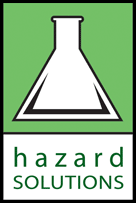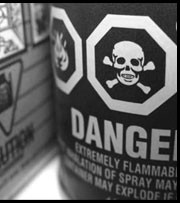IATA Dangerous Goods Training /Focused Training For What You Ship
By: Arthur Mahoney, M.S., CHMM, REA
May 5, 2008
As a shipper of hazardous materials/dangerous goods* by air, are
you meeting your legal requirements? Are your employees properly
trained and certified to ship hazardous materials/dangerous goods?
Was the training they previously received focused on what they
actually ship? You may have heard that the maximum civil penalty for
a hazardous materials/dangerous goods* violation was recently
increased from $32,000 to $50,000. In addition, the
maximum criminal penalty of 5 years imprisonment was increased to 10
years for certain violations.
To ensure compliance with hazardous materials/dangerous goods* air
shipping regulations, the Federal Aviation Administration (FAA)
inspects shippers and carriers of hazardous materials/dangerous
goods*. FAA inspectors say that the most common violation of
hazardous materials/dangerous goods* shippers is failure to train
employees. Additional common violations include the improper
classification, failure to use acceptable packaging or follow
packaging instructions, and improper labeling of hazardous
materials/dangerous goods*.
Do not delay compliance. Now is the time to act and ensure your
employees are adequately trained.
Dangerous Goods Commonly Shipped by Technology Companies
Biotech and Pharmaceutical:
- Dry ice
- Infectious substances (e.g., Adenovirus, E Coli, etc)
- Genetically modified microorganisms
- Pharmaceutical intermediates (e.g., small molecules)
- Fixing agents (e.g., formalin)
Other High Tech Industries:
- Research chemicals
- Flammable, corrosive, toxic chemicals
- Samples
- Compressed gases
- Magnetized materials
Training Requirements
Who Must be Trained:
Is everyone who is required to be trained at your company actually
trained? Very often, Shipping and Receiving personnel are tasked
with shipping dangerous goods packages which they did not personally
package. Laboratory personnel without the proper training may have
packaged the material- potentially putting your company at risk. Per
49 CFR and HM-223**, training must be provided to employees who
affect hazardous materials/dangerous goods* transportation safety.
This includes employees who:
- Determine a material's hazard class(es);
- Select the packaging;
- Fill and close a packaging;
- Mark and label a package;
- Prepare or review shipping papers and emergency response information;
- As an importer of hazardous materials/dangerous goods*, provide the shipper with shipping requirements that will apply to the transportation of the material within the United States;
- Certify that a hazardous material/dangerous good* is in proper condition for transportation;
- Load, block, and brace a hazardous material/dangerous good* package in a freight container or transport vehicle;
- Segregate a hazardous materials package in a freight container or transport vehicle from incompatible cargo.
- Selecting, providing, or affixing placards for a freight container or transport vehicle to indicate that it contains a hazardous material/dangerous good*.
How Often is Training Required:
Initial training is required within 90 days of the job
function. Retraining is required with 24 months of initial
training. Additionally, employees must be retrained when there are
changes in the regulations which impact them.
What is the Required Content of the Training:
- General familiarization training
- Function-specific training
- Safety training
- Security awareness training
Testing and Certification:
Employees must be tested and certified. But the testing can (and
should) be customized to the functions of the employee.
Our Training Solution
Focused on What You Ship:
Save money and time. You do not need to send your employees to
offsite training courses which may last three days! The program I
offer can often be completed in a single 1-day session at your
facility. In addition, the testing and certification can also be
customized to the specific job functions.
Added Value: Your Very Own Shipping Guidelines:
Included in the training are shipping guidelines/checklists
customized to the types of materials you actually ship. These may
also include procedures and forms for carriers that you use (e.g.,
FedEx, World Courier, DHL). These are included in a customized
manual for your shipping personnel.
More Added Value: Packaging Solution Consultation:
Working with a number of packaging vendors over the years, I can
assist your organization in developing customized packaging
solutions.
An Easy Way to Comply
Contact me and I would be happy to provide you a quotation for
an IATA Dangerous Goods Training Program specific to the
dangerous goods that you ship.
What makes my program especially valuable is that it is specific to
the dangerous goods that you ship and it is presented by me, an
expert in the field.
Other related transportation training topics include:
- 49 CFR for Shipper's by Ground/Highway,
- Hazardous Waste Management and Manifest Preparation
Other commonly requested training includes:
- Bloodborne Pathogens (annual requirement)
- Hazard Communication
- Chemical Hygiene Plan
- General Safety
- Laser Safety
- Biological Safety
- Radiation Safety
- Many others, please contact me
Served by an Expert in the Field
My credentials include:
- 17 years of experience assisting public and private companies to comply with environmental and safety laws and regulations
- Educator of safety professionals
- MS in chemistry from University of California, Berkeley
- Certified Hazardous Materials Manager (Masters Level)
- Registered Environmental Assessor
Kind Regards
Arthur Mahoney, MS, CHMM, REA
Hazard Solutions LLC
326 Sonora Drive, San Mateo, CA 94402
email: art@hazardsolutions.com
website: http://www.hazardsolutions.com/
Software website: http://www.hazardsolutions.com/software/
--EHS Compliance, Training
and Data Management Solutions—
*Dangerous goods includes articles or substances which may be
hazardous (in air transport). The definition of dangerous goods is
found in the Dangerous Goods Regulations, published by the
International Air Transport Association (IATA) . Dangerous goods are
synonymous to hazardous materials, which is the term used to
describe hazardous substances in 49 CFR.
**HM-223 clarifies the many pre-transportation functions which
necessitate training.
Disclaimer: The information presented above should not be construed in any way
as legal advice or an interpretation of regulations. It is
meant to provide basic information about topics that may affect
clients and colleagues.



